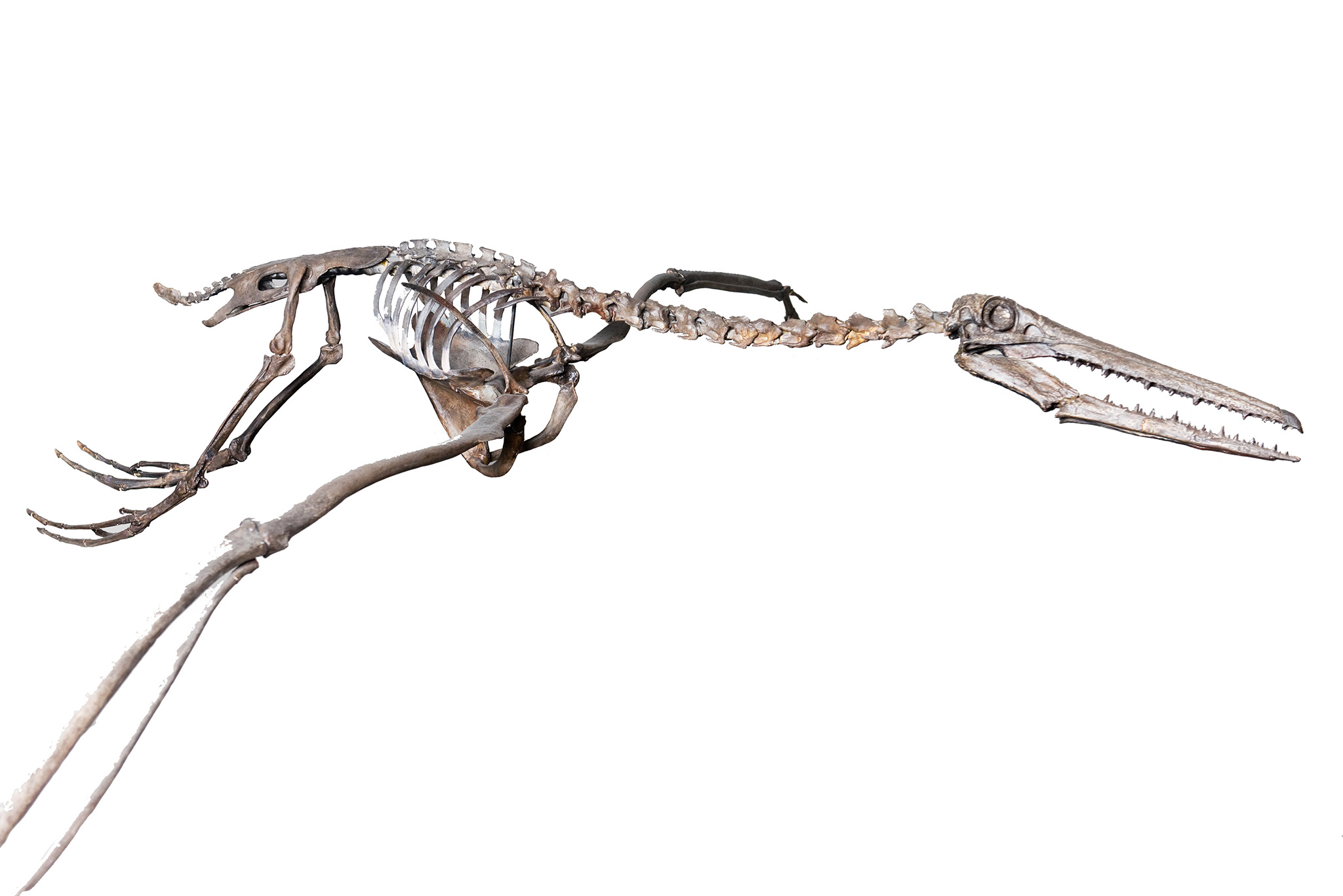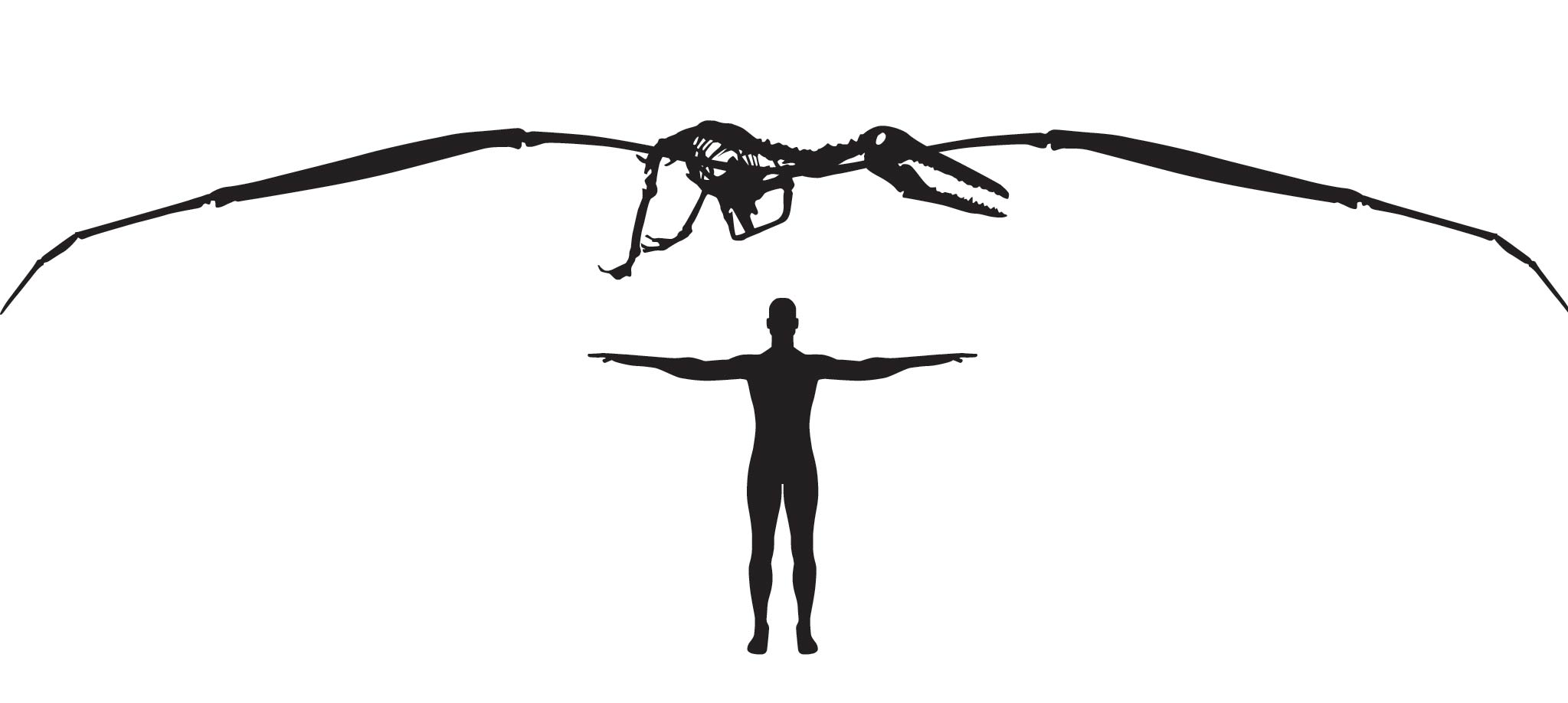A False-Toothed Giant
Pelagornis sandersi, a giant bird that was discovered from an excavation at the Charleston Airport.
Pelagornis belongs to a group of birds known as pseudodontorns, or false-toothed birds. This relates to the toothy structures on Pelagornis’ beak. Although they appear to be teeth, and serve the same function, they are not true teeth. Instead, they are raised projections of the beak itself. This means if lost a “tooth” it was actually breaking off a piece of its jaw.P. sandersi also currently holds the record for the widest wingspan of any bird known to science. With estimations placing the width between 20 to 24 feet, depending on how long the flight feathers would have been, Pelagornis would have cast a truly imposing shadow.
Those giant wings actually exceed what was previously thought to be the upper limit of powered flight. Although some animals like pterosaurs had wider wingspans, they are typically interpreted as gliders. The balance between having the muscles required to flap giant wings, and still being light enough to fly, is important. Pelagornis likely got around its limitations by catching rising air currents off of the ocean and gliding as often as possible, like modern seabirds.




